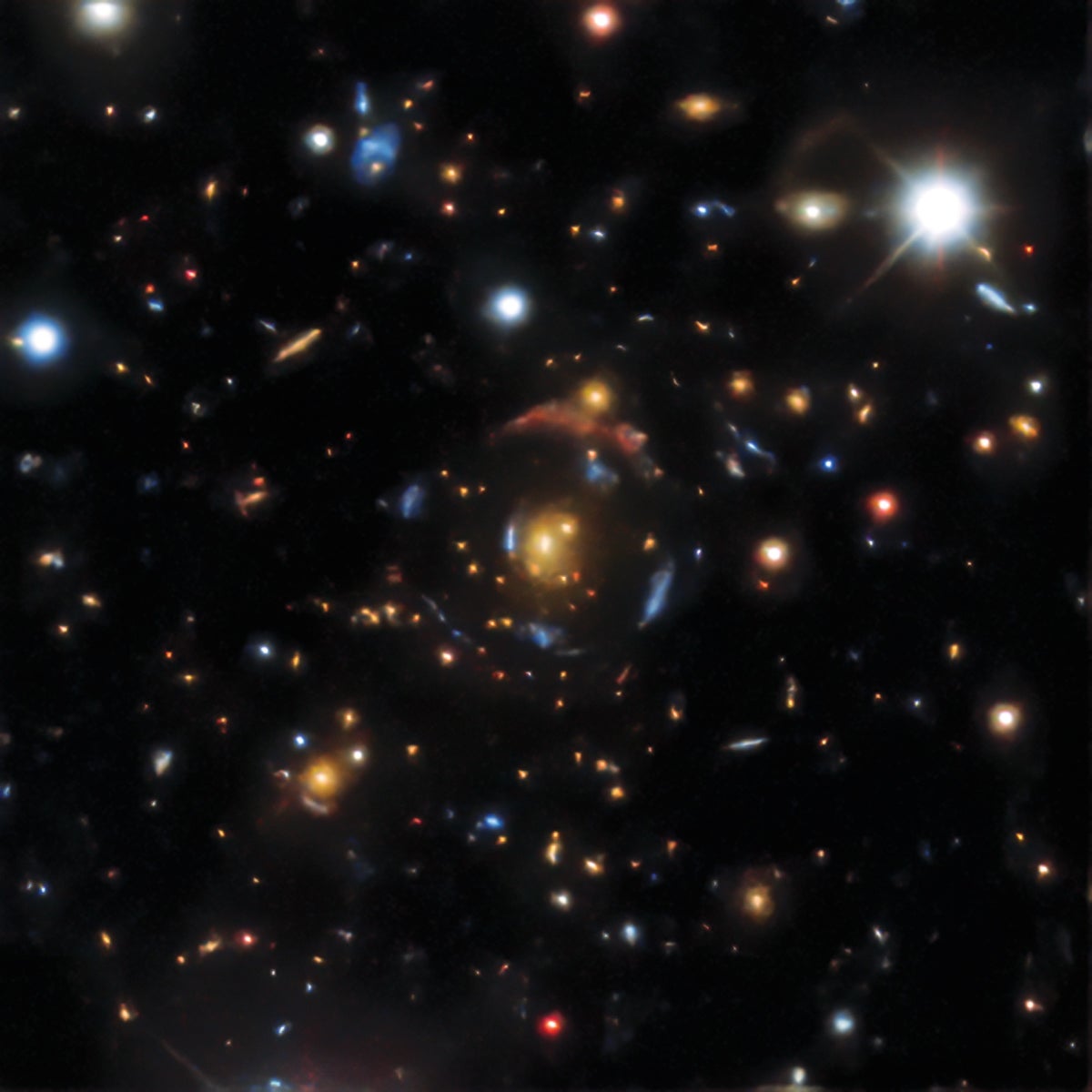- cross-posted to:
- [email protected]
- cross-posted to:
- [email protected]
A galaxy cluster bends light from seven background galaxies around it, letting astronomers peer into space and time
An almost impossible alignment of galaxies that forms a giant magnifying lens could give astronomers an unprecedented deep view of the universe.
The Carousel Lens—named for its concentric circular patterns, like the reflections in a fun-house mirror—incorporates a cluster of galaxies about five billion light-years from Earth whose gravity is so intense that it magnifies the light of seven galaxies behind it, between 7.6 billion and 12 billion light-years away. This phenomenon, called gravitational lensing, occurs only when galaxies line up precisely from our perspective.
As seen from Earth, the massive gravitational lens creates multiple images of six of the seven background galaxies, each of whose light arrives to us by a slightly different path. If a “transient” event, such as a supernova, occurs in any one of those galaxies, astronomers here will have up to four views of it at slightly different times.


